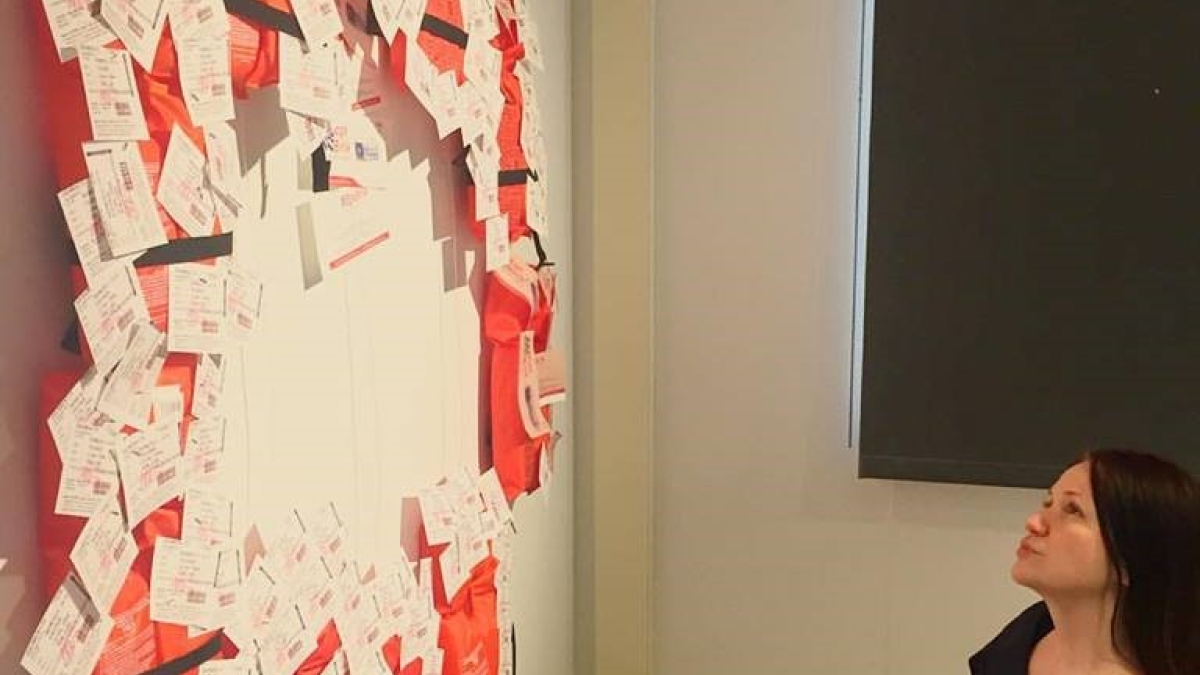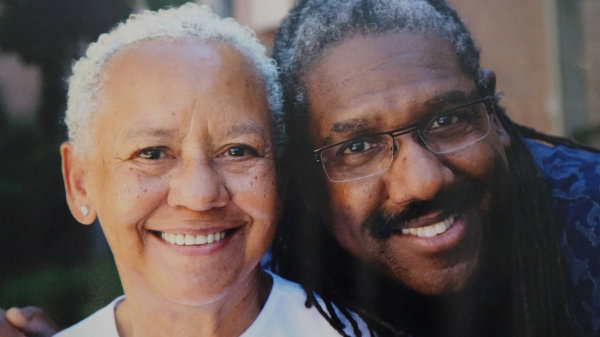Hugh Downs School welcomes artist scholar as newest faculty member

Serap Erincin is an artist scholar from Istanbul and publishes widely on experimental performance and transnational social justice performance. Her performances and installations intersect narratives of social justice and environmental concerns. Photo courtesy Mark Ventura
This fall semester, the Hugh Downs School of Human Communication at Arizona State University welcomes new tenure-track faculty member Serap Erincin as an assistant professor of communication.
Erincin, who comes to ASU from Louisiana State University, is an artist scholar from Istanbul and publishes widely on experimental performance and transnational social justice performance. Her performances and installations intersect narratives of social justice and environmental concerns.
Here, she shares more about what she hopes to contribute to the Hugh Downs School, what she hopes to impart to her students and what gets her creative juices flowing.
Question: Why did you want to come to ASU and what do you hope to add to the Hugh Downs School of Human Communication?
Answer: My reasons for wishing to be at ASU were multifaceted. Most important to me was the welcoming, international and multicultural makeup of the department. Also knowing that I would have amazingly brilliant colleagues with such a wide range of expertise yet working collaboratively mattered very much. Currently, ASU is a very exciting and vibrant place for interdisciplinary artist scholars.
My work is interdisciplinary, socially engaged and takes place across various media. I write critical, theoretical scholarship and make socially engaged performances and installations. I was very impressed by the various initiatives and innovative visions at ASU. I could see my work fitting here very well. I felt my work would be valued, understood, appreciated and continue to grow, and that I would be able to contribute to society through collaborations across campus. I felt I would be happy here; it felt right.
I am currently the vice president of Performance Studies international (PSi). The Hugh Downs School is already very international and has very solid foundations in performance studies, but it seems in performance studies the focus has been more U.S. focused. I hope to expand this in my time here. A couple of decades ago, the sixth Performance Studies international conference happened here. I would love for it to happen here again, perhaps on the theme of borders.
Q: Why did you become an educator?
A: I started tutoring when I was 13. I have been teaching at the university level for almost 20 years. As an artist scholar, my teaching is informed by my research, and my research is nourished by my teaching. I see teaching as the most engaged way of activism. It energizes me. I love making things with students. And I care very much about my students and seeing that I can contribute to their growth, learning and becoming a socially engaged member of society is very rewarding. I also learn from them as much as they learn from me.
Q: What led you to your field?
A: I have been in the arts since (I was) very little. I was working with established experimental and theater and dance theater companies starting in middle school, and professionally, so during and after college. When I started to focus on making my work, eventually I became invested in the critical engagement around the work — which eventually led me to earn my PhD in performance studies at the Tisch School of the Arts at New York University.
I write across performance studies, inter/cultural studies, media studies, gender and sexuality studies, and several other subfields because the topics I am invested in happen in these areas. As an artist, I started in the theater; I loved physically focused theater, and in the past decade, also through my critical engagement but more so out of my love of making things, I started making multimedia installations. At first, these installations were emerging as part of my performances, and eventually, they started standing on their own. Each of my installations has performative elements. For instance, my exhibition "Human Rights/Human Rites" had more than a dozen installations. Each was interactive. So I think of my installations also as performances. I presented my work on all continents except Antarctica.
I think at the end of the day it was intuitive; I knew that, as someone whose written scholarship and artistic work, (which) constantly inform one another, and who is in between many things, performance studies was where I needed to be.
Q: What is your current research focus?
A: I write about performance and technology, specifically on theories of performing in contemporary live performance, on social justice performance, specifically on peaceful resistance movements, and on solo performance. My artistic research is at the intersection of environmental concerns and stories of social justice. For instance, I write science fiction or futuristic narratives that overlap stories of endangered species and marginalized peoples, which I then incorporate into multimedia visual work.
Q: What do you want every student to learn?
A: That their stories matter. What matters the most in performance is the connection that emerges between the spectator and performer; we are all participants. That change happens only when that connection is established that it matters to create spaces of imagination in all our work.
Q: What do few people know about you?
A: A lot, probably. I used to be a journalist and did lots of film and documentary films, and arts and politics journalism, producing programs for news channels in Istanbul and BBC World Service in London. I also translated a lot of works, including a few Tolkien books. I gained lots of practical skills from both that got transferred into my later work. I used to scuba dive, have a big motorcycle and camp a lot — now I’m scared of cliffs. I can get along with all cats and dogs. I’m very invested in science fiction; I also taught it and have taken many seminars on science fiction films, so I’m critically engaged with it. However, I enjoy science fiction and spy movies so much that I will watch anything; my standards are pretty low in this one area! I’m always looking for sci-fi and espionage movies.
More Arts, humanities and education

School of Social Transformation faculty member assumes new title with NSF
School of Social Transformation faculty member and Founding Executive Director of the Center for Gender Equity in Science…

ASU's Neal Lester reflects on life, death of poet Nikki Giovanni
When Neal Lester heard on Monday that poet and activist Nikki Giovanni had died, the news hit hard.Lester, the founding director…

Learning by stepping outside
By Adriana MaestasAmid a world increasingly captivated by all things digital, more than 200 Arizona teachers have crafted…